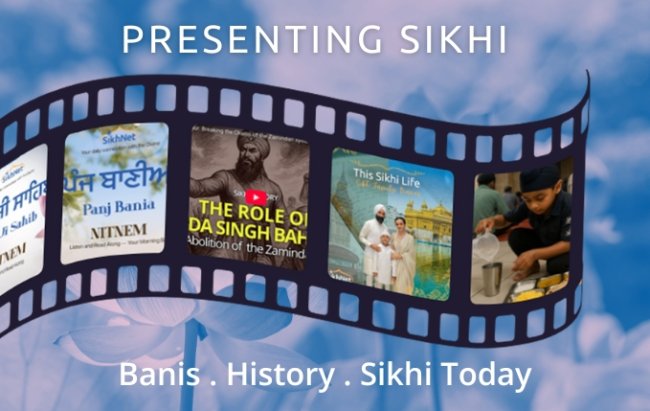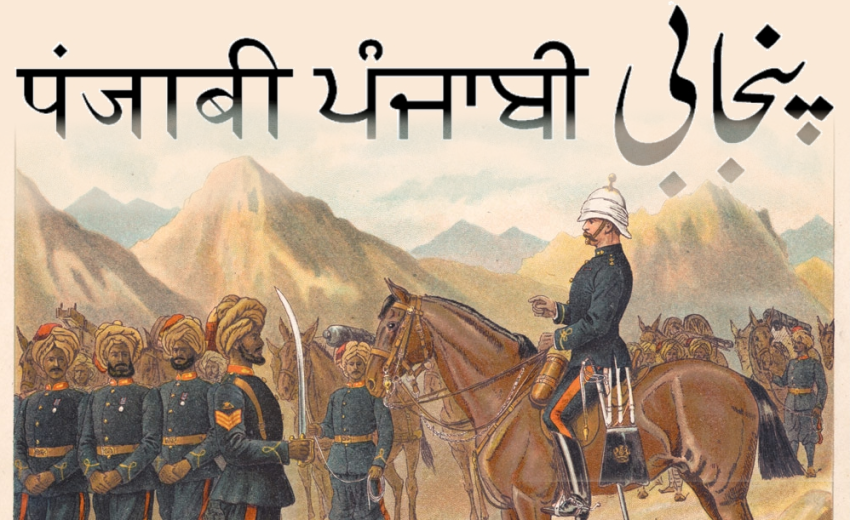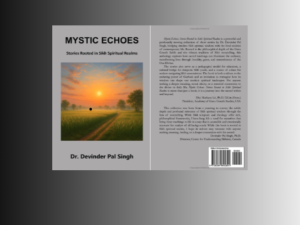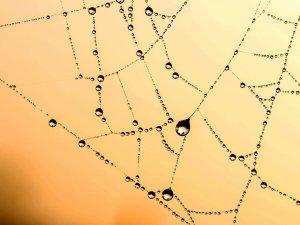Introduction
During Maharaja Ranjit Singh’s rule, Persian was used as the language of the court and business. However, Punjabi was used as a spoken language all over Punjab and as a liturgical language of the Sikhs. According to Leitner [1], indigenous education in Punjab was provided by maktabs, madrassas, patshalas, Gurmukhi and Mahajani schools. Maktab was a Persian school while the madrassa was an Arabic one. The patshalas were Sanskrit schools while the Gurmukhi schools taught Punjabi in the Gurmukhi script. All these schools were provided state funding through endowments to teach Theology. Some Sikh chiefs had also endowed some institutions and patronised various artists, painters, granthis, pujaris, Sufis and other learned men.
After the annexation of Punjab in 1849, the British Indian government started planning for the introduction of a modern European system of education in Punjab. Sikh Sardars were generally as innocent of letters as the medieval English barons of England. Persian had been the language of the court and business of Maharaja Ranjit Singh. It was replaced by Urdu in Persian script as the language of the provinces in Punjab during 1851 to 1854. Urdu was adopted as the medium of instruction in schools under the government's patronage. The Punjab Administration Report of 1851-52 states:
“Punjabi is falling into desuetude, losing its currency as a spoken language, and degenerating into a provincial and rustic dialect whereas Urdu is gaining ground among the upper and middle classes in Punjab” [2].
During the 1880s as the British authorities formalised several policies for the instruction of western style education in Punjab, this event led to a vigorous debate among the Punjab elite. The immediate issue that the administration wanted to settle was about an appropriate language of literacy to be adopted by government schools. Although the choice was clear in most areas of Punjab where Punjabi was the common language of ordinary people. However, instead of choosing the shared spoken language Punjabi which most Punjabis used for daily communication, its elite were divided along religious traditions of the subcontinent. This meant Punjabi speaking Hindus argued to be taught in Hindi while Muslims contended Urdu as the most appropriate language of literacy. Only groups representing the numerically smallest Sikh community were left to support the claim of Punjabi not so much for its educational and linguistic merits or worth but more so by rather insulting and contemptuous attitude of Hindus and Muslims towards Punjabi – an attitude which they had no reason to believe among their fellow Punjabis until this issue brought out such a blatant prejudice among several Hindus and Muslim groups and organizations [3].
The secular Punjab of Maharaja Ranjit Singh was divided on communal lines after its occupation and the colonial rulers exploited this divide to their advantage. Outwardly, they were showing sympathy that western education will be introduced to promote vernacular language and literature. Dr. GW Leitner, who was appointed as the first Principal of Government College Lahore in 1864, was a committed Orientalist. He was in favour of setting up an Oriental University in Punjab but his efforts did not bear fruit. When his dream of a University was not fulfilled, he realized it by starting an Oriental College on the campus of the Government College Lahore in 1870 [4].
The Hunter Commission and the Language Issue in Punjab
Punjab was the last province to be merged in the British Indian Empire. Western education was introduced in Bengal and some other provinces. Punjab was comparatively late in establishing formal education, mainly due to its late entry into the Indian empire. The British wanted to evaluate the impact of the western education on the native Indians. For this purpose, Hunter Education Commission, headed by Sir William Wilson Hunter, was appointed by Viceroy Lord Ripon, by a resolution of his Government, dated 3rd February 1882. The Commission covered all the Provinces of India and submitted its report in the same year. Most of its recommendations were accepted by the British Government during 1882 to 1901. It covered all aspects of education from primary to the university stage, including the language to be used as medium of instruction.
For Punjab, the Commission members were Lord W.W. Hunter, Rev. W.R. Blackett, Mr. C. Pearson, Haji Ghulam Hassan and Mr. K. Deighton [5]. The Commission started its sittings in Lahore from the beginning of 1882 and for the next nine months it took evidence from experts calling on educational administrators, local organisations and general public to present their views and memoranda. The Commission had drafted a set of nearly seventy questions ranging in its scope seeking wide opinions about primary, secondary to higher education, its administration, and quality of textbooks, system of government grants, about efficiency of state run schools, teachers’ pay and conditions. There was an innocuous looking question number 11, which created maximum ruckus in Punjab [6]:
“Is the vernacular recognised and taught in the schools of your province the dialect of the people and if not, are the schools on that account less useful and popular”?
The response to this question forms a substantial portion of the Commission’s proceedings. The responses from various organizations and individuals can be classified on the basis of the communal divide of Punjab. There was a strong Hindu lobby in favour of Hindi and Sanskrit in the Devnagri script; Muslim lobby was in favour of Urdu and Persian in the Persian script, and the Sikh lobby in favour of Punjabi in the Gurmukhi script. The ethnic composition of Punjab is represented by Table 1, which is based on the census of 1861. The Muslims constitute an overwhelming majority of 55.65%, Hindus come next with a population of 37.67%, and the Sikhs constitute nearly 6% of the ethnic population.
Table: 1: Ethnic composition of Punjab in 1861
-------------------------------------------------------------------------------------------------------
Religious Group Numbers Percentage
-------------------------------------------------------------------------------------------------------
Mohammedans 10,525,150 55.65
Hindus 7,130,528 37.67
Sikhs 1,121,004 5.942
Buddhists and Jains 38,690 0.2
Christians 33,420 0.2
Others 1,645 0.001
---------------------------------------------------------------------------------------------------------
Total 18,865,037 100
---------------------------------------------------------------------------------------------------------
(a) The Hindi Lobby: The Hindus of Punjab were relatively more educated than other communities and there was a strong Arya Samajis’ lobby of Lahore in favour of Hindi. Their memorandum to Hunter Commission reads as follows:
“The vernacular recognised and taught in the schools of the Punjab is not the dialect of the people. It is a foreign language, which is spoken neither by Mohammedans nor by Hindus. The vernacular of the people is Hindi beyond Sutlej, and a dialect of Hindi on the Punjab side of the river, whereas the language taught in the schools is Urdu......” [p. 471].
The Arya Samajis were neither in favour of English as medium of instruction in schools, nor in favour of Urdu and Punjabi. The arguments of Punjab Brahmo Samaj leaders were also on the same lines. The Samaj elaborated its advocacy of Hindi; it took exception to the use of Urdu in primary schools, arguing Hindi bhasha should replace it. This lobby wanted to replace Urdu by Hindi but it also demolished the claim of Punjabi as an independent language:
“Why we prefer Hindi to Punjabi is that in the first place, the latter is only a dialect of the former; secondly, Hindi being almost identical with easy Urdu, the change will require will chiefly in the characters.... The greatest advantage of the Deva Nagiri characters is that they can be learnt in such a short time that their use will not only save a great amount of expenditure on primary education...” [p. 492].
Memoranda signed by thousands of Punjabi Hindus from Amritsar (9000), Ludhiana (2033), Delhi (4725), Rohtak (3287) and other districts of Punjab were submitted to the Hunter Commission. The Hindi lobbyists claimed that Hindi is the national language of Punjab. They were distorting the language heritage of Punjab by their mischievous argument:
“The language of Punjab is no doubt called Punjabi, but properly speaking, Punjabi is not the name of any one dialect spoken in any one part of the province but collectively of all the different dialects spoken in parts of it. This, of course shows, that Punjabi is not any one language which may be considered to be vernacular of the province, but it must be remembered that the different dialects of Punjab are not far removed each other and that they have a common parent language which is called Hindi.”
The Hindi lobbyists were attacking not only Punjabi but also its script Gurmukhi:
“What is called the Punjabi or Gurmukhi literature is nothing but a collection of Hindi books in the Gurmukhi characters. Surely, if Punjabi or Gurmukhi had been a language distinct from Hindi, its literature would not have consisted chiefly of a number of Hindi books in the Gurmukhi alphabet..... What is called the Punjabi or Gurmukhi literature is nothing but a collection of Hindi books in the Gurmukhi characters. The sole claim of Gurmukhi is that it is the alphabet of the Sikhs” [p. 535].
The Commission was flooded with memoranda against acceptance of Punjabi in the Gurmukhi script. Kangra residents led by Ganesh and Sanu with 200 others asked for Hindi. It rebutted Sikhs’ claim for Punjabi:
“Sikhs may advocate the adoption of Gurmukhi but even their sacred book [the Granth] is written in pure Hindi, the characters alone being different...”
Sardar Dyal Singh Majithia, an influential aristocrat who was a highly educated Sikh Sardar and president of the Indian Association, Lahore, was another witness to the Commission. His submission was based on the summary of other peoples’ memoranda. He prepared a detailed note on pros and cons of adopting Urdu but then he wrote a lengthy note in support of adopting Hindi as medium of instruction. But Dyal Singh failed to mention even once the fate or role of the Punjabi language as the medium of instruction? As highly educated and influential man of Lahore, he was obviously playing on a larger canvas of Hindu revivalism and ‘national’ consciousness being considered and adopted by many leading Hindus of the Punjab at that time [p. 194-5]. He donated all his movable and immovable properties in Punjab to set up Dayal Singh Trust. Thus his wealth was used in funding The Tribune, Dyal Singh College & Library and activities of Brahmo Samaj in Lahore and Calcutta.
(b) The Urdu Lobby: The Anjuman-i-Punjab was a body of educated persons all attached to the Punjab University College, Lahore. However, on the language issue, they were also split along the religious divide. The Sikhs among them advocated Panjabi language, the Hindus advanced the cause of Hindi and while Muslims sought the continuation of Urdu. Among its members, Gurmukh Singh presented a statement for Panjabi, Syed M. Hussain and Syad Amir Shah advocated Urdu, while Amar Nath and Ishar Pershad launched many arguments for the introduction of Hindi.
Residents of Lahore, including representatives of Christians, Muslims and Hindus, presented a memorandum signed by 3906 persons in favour of Urdu. They argued against the lobby of Lahore’s Bengalis ‘who have gathered many Hindu young men in Arya Samaj and Brahmo Samaj and who had undertaken a crusade against Urdu through The Tribune and a petty paper called ‘Reformer’. They argued: ‘When any Panjabi youth wishes to express excited feelings and dignified thoughts, he invokes Urdu for the loan of appropriate expressions.’
Maulvi Fazal-ul-Hasan, Headmaster of Oriental College, Lahore and Sardar Kanwar Bikarma Singh Bahadur Ahluwalia of Kapurthala State were also called to appear before the Commission and both attested in favour of Urdu.
[c] The Punjabi Lobby: Punjabi lobby was the smallest in terms of organisations and individuals who presented arguments and memoranda to the Commission. Among major organisations, the Singh Sabha of Lahore [also known as Sikh National Association] presented a memorandum to the Commission on 1 August 1882. It argued on several ways for Punjab and made clear the distinction between Hindi and Urdu on one hand Hindi and Punjabi on the other: ‘Punjabi characters are the simplest of all other characters to require fewer strokes than Deva-Nagiri’ [p. 566].
There were a few individuals who testified before the Commission on behalf of Punjabi language. The first was Baba Khem Singh Bedi - a descendant of Guru Nanak’s family, who put up a very able defense for the Punjabi language. As he was called as a witness, Bedi answered many questions of members with wit and precision and citing several humorous phrases from chaste Punjabi. He told the Commission members that the condition of Punjabis is best summed up by the phrase: “parhe Farsi veche tel, ih dekho karmon ke khel”. He argued forcefully that the mother tongue should be the first language taught to children of the province which was acknowledged by all to be Punjabi.
Sardar (Sir) Atar Singh was also incensed by the allegation that Punjabi had no literature. He wrote,
“it is evident that Punjabi is not destitute of literature or science, and if any man may want to satisfy himself of this, he may inspect my Bhaodour House library, where he can find that no less than fifteen hundred of Panjabi books are lined up there. Even the fine art [music] is not wanting, for there are many books on musical science in Punjabi..... Thus you see Punjabi is the easiest, cheapest and surest mode of imparting elementary instruction to all sorts of people. ... I have no prejudice for Hindi or Urdu but instead of that I want them a man may learn his mother tongue as well as other languages….”
[d] Testimony of English Witnesses: B. H. Baden-Powell, C.S. Commissioner of the Lahore Division:
“As regards the controversy Hindi-versus Urdu, the proposal to adopt the one language to the practical exclusion of the other.... with them it is a national and a religious question. The Sikh and Hindu think that their nationality and faith are undermined by Urdu which they regard as the badge of Mohammedanism. On such grounds, the discussion would be endless. ... All in my opinion, there should be no compulsion ...allow each village to employ Hindi, or Gurmukhi or Urdu readers according to circumstances”.
Dr. G. W. Leitner LL.D. sent the longest memo to the Commission besides appearing as an expert witness to answer Commission members’ queries [p. 352-]. His remarks on the language are incisive and very insightful. In particular, he exposed Hindus’ advocacy of Hindi and arguments for the use of ‘Devnagiri alphabet for Gurmukhi, as nothing more than a mere subterfuge for introducing Hindi’. He thought employment of pundits to teach Sanskrit and Hindi to Hindus, and of bhais to teach Gurmukhi to Sikhs and of maulvis to teach Arabic to Mohammedans would be a satisfactory way of resolving this vexed issue.
Miss M. Rose Greenfield provided substantial evidence on 2 June 1882 when laid down some cogent arguments for the teaching of Punjabi language. Taking example of Ludhiana villages of which she had considerable experience of schooling, she argued that much time is wasted by teachers’ instruction in Urdu - a language which is un-familiar to children in primary schools. She concluded:
“I strongly advocate therefore that in all village schools at least Gurmukhi should be taught first, on order to open the minds of the children, adding in the higher classes Urdu for Mohammedans and Hindi for the Hindus, and feel sure that pupils so taught will be more intelligent and make for more rapid progress than those instructed on any other plan...”
Hunter Commission Recommendation
Unfortunately the prejudices of both the parties have turned this language question into a religious one, and the most prominent subject of the day [p.108]... In practical terms, this meant Urdu was to continue as the medium of instruction with some ‘vague recognition’ of Punjabi and Hindi in particular regions of the province. While the Commission made a number of proposals in other aspects of education in the province, its conclusion regarding language issue was that it was ‘fraught with worrying aspects of ‘Hindu and Sikh and Muslim nationalism!’
Conclusions
- With the introduction of formal schooling by the colonial administration in the Punjab, the medium of instruction issue arose as a new question, and it immediately acquired the status of a major socio-linguistic controversy leading to much heated debate. Until then, most Punjabis, by and large, had shared Punjabi as a common medium of oral exchange among themselves. As the issue was forced by the colonial initiative to reform traditional education, the new cultural menu offered particular social groups, who had differentiating characteristics in terms of religious affiliation, to start claiming another distinction of group identity. The new factor was specific language as a marker of group identity and affiliation. In this sense, Anderson’s hypothesis regarding linguistic identity and nascent form of nationalism finds ample endorsement from the colonial Punjab [7].
- Thus, a people who were hitherto defined separately only by their religious heritage, became further differentiated by another factor; the language and its associated script. For Hindus, the Hindi language, for Muslims, Urdu language acquired symbols of ethnic identity, meanwhile the status of Punjabi crumbled by this modernisation process. One could say, in a sense, Punjabi was almost made destitute to be supported rather half-heartedly by the Sikhs. With a particular language becoming a medium of education, Urdu in the Punjab case, other groups felt the force of discrimination and started making demands to be given equal status in the form of public space generated by colonial educational policies especially in terms of jobs.
- The evidence before the Commission also suggests that it was the Hindu elite who were most aggressive champions of Hindi language – they organised petitions on a massive scale; with much disparaging and unwarranted observations on Punjabi as also on Urdu language. The kind of arguments used by many Hindu organisations to demolish or dismiss claims of Urdu and Punjabi surely sowed the seeds of communal discord which became a factor of tragic consequences as the colonial rule ended with the partition of Punjab in 1947. The shadow of the 1880s continued to lurk even further in the postcolonial Indian Punjab. As the demand for a Punjabi speaking state was put forward by Shiromani Akali Dal in the 1950s, echoes of such old arguments were resurrected.
References
-
GW Leitner. History of indigenous education in the Punjab since annexation and in 1882. Lahore, 1885.
-
JF Bruce. A History of the University of the Punjab. Lahore, 1933.
-
DS Tatla. The Origin of Language Controversy in the Colonial Punjab. https://www.academia.edu/12341733/The_Origins_of_Language_Controversy_in_the_ Colonial_Punjab
-
HS Virk. Role of Dr. G.W. Leitner in Promotion of Vernacular Education in Panjab. https://www.researchgate.net/publication/356415361
-
Report of the Punjab Provincial Committee with evidence taken before the committee and memorials addressed to the Education Committee, Calcutta: Printed by the Superintendent of Government of India, 1884, 602pp. [London, BL V/26/860/12].
-
NIEPA (National Institute of Educational Planning and Administration) Archives, Delhi. Report of the Indian Education Commission (Hunter Commission). Appointed by the Government of India, dated 3rd February 1882. http://14.139.60.153/handle/123456789/1277
-
B. Anderson. Imagined communities:Reflections on the origin and spread of nationalism. London, 1983.
End Note: Page numbers mentioned in the text refer to the Hunter Commission Report as given by DS Tatla [3].






